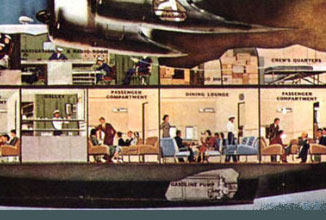Airlines don't make money from the Economy class. On Average two thirds of an airlines revenue comes from the First, Business and Premium Economy classes. ~45% of passengers account for ~84% of an airlines revenue -- (Pareto Distribution at work).
Airline Class History
Between the 40s and 50s majority of an airlines revenue came from contracts for air-mail routes with the US Postal Service. These flights had many stops with odd hours -- a coach fare would get you a seat at the passenger section. You could buy a first class fare that had minimal to no stops that would fly on a passenger dedicated plane. In order to cut costs and fit more people within a flight, airlines had to figure out how to offer the same product for different prices to different people. The solution: change the flying experience for people on board. In 1952, the Standard (Business) Class and Tourist (Economy) Class was created. The former was a full fare price with seating at the front of the plane and could be purchased any time. The latter was a discounted fare with seating at the back of the plane and had to be purchased in advance with no flexibility.
Between 1969 - 1973 three main events helped US airlines experiment and design the current classes we use today. The introduction of the 747, invention of the Concorde and de-regulation of the industry. Initially, the Business Class was separated from the Economy Class. Then the middle seat was blocked for the Business Class and eventually a totally new cabin was designed with more comfortable seating and better amenities. The idea was for the Concorde to fly First Class and regular planes for Business and Economy Classes, however, the Concorde turned out the be an economical failure. Airlines were slow to include First Class fares, as a result, only a minority of airlines flying transatlantic have a first class cabin (American Airlines, AirFrance, Swiss, British Airways, United, Lufthansa). First class may soon be merged with Business Class because the cost of running First Class is significantly higher and there is little difference between the experience.




